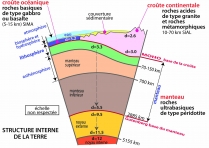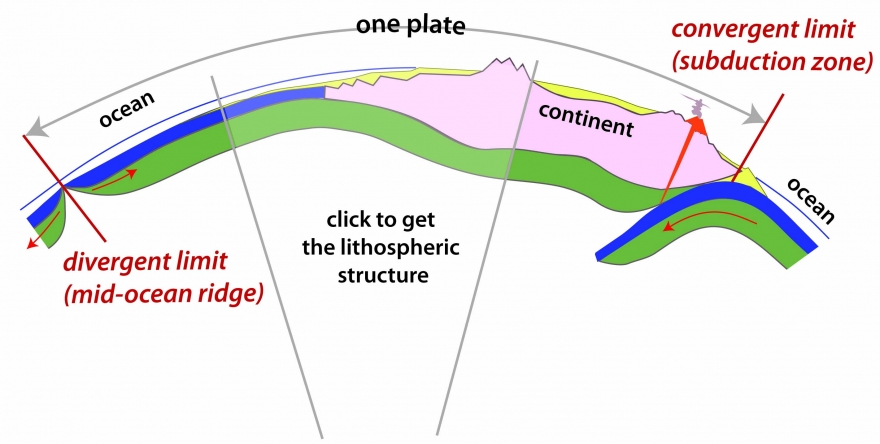Rocks and metamorphism
This phenomenon, called metamorphism, produces new rock types. Serpentinite, common in the region, originates from the Earth’s mantle and forms the suture, or seam, of the no longer existing Alpine Ocean. The last glaciations of the Quaternary era are one of the reasons for the shape of the Alps. Another reason is the rock type.
This is well illustrated by the differences between mountains north or south of the Rhone Valley. The predominant rocks to the north are made of limestone. However south of the Rhone Valley, in the Val d'Hérens, it's the traditional slate rooftops in the villages of the valley that testify to the availability of this flaky, easily split rock.
During the formation of the Alps, both these rock types succumbed to tectonic deformation, or metamorphism. This process transforms deeply buried rocks, subjected to enormous pressure and extremely high temperatures, into other rock types with new mineral components.
Mineral structures, determined by pressure and temperature, are geological thermometers and barometers. This information 'read' by geologists has enabled the conclusion that most alpine rocks originate from depths between 20 to 60 kilometres and have been subjected to temperatures between 500°C to 600°C. These metamorphic rocks later reappear at the Earth's surface and can be seen along the Val d'Hérens walking trails. Their layered aspect is a general characteristic.Chlorite or common green mica is one new metamorphic mineral that characterizes many alpine rocks south of the Rhone Valley. And to the north the coloured, more or less pure marble, was transformed from limestone.
|
Sediment |
Diagenesis > rock |
Metamorphism > new rock |
| clay |
shale |
schist |
|
sand |
sandstone |
quartzite |
|
limestone mud |
limestone |
marble |
|
gypsum |
gypsum |
anhydrite |
see glossary for a description of these rocks
Alpine rocks are metamorphic rocks, transformed by one or several metamorphic events. But before metamorphism, a process called diagenesis had transformed sediments deposited millions of years ago in the Alpine environment into indurated rock - sandstone, mudstone, and shale. The sand of beaches becomes sandstone for example.
The more recent sediments of moraines or alluvial deposits are still soft sediments, made of clay, silt, sand, pebbles and blocks.
As well as old sediments the Alps also contain older igneous and magmatic rocks, also called
crystalline rocks, such as granite and basalt, coming from deep melted rock or magma.
Metamorphism transforms granite into gneiss, and basalt into meta-basalt, often called
prasinite in the Alps, a term used for all volcanic rocks like basalts (lava flow) and volcanic tuf (ashes).
|
Original rock |
Metamorphism |
|
granite |
gneiss |
|
basalt |
metabasalt ou prasinite |
|
peridotite |
serpentinite |
Serpentinite is one of the most interesting rocks in the Alps and common in the Val d’Hérens. It was locally transformed into soapstone or Pierre ollaire, easy to carve, it has the capacity of absorbing, storing and evenly radiating heat. This rock, used hundreds of years ago to build furnaces for example, is still used today.
Serpentinite originated from the metamorphism of peridotite, an ultrabasic rock that constitutes the Earth’s mantle below the Earth's crust. The crust is constituted of mainly granite on the continent and basalt and gabbro in the ocean.
Further readings :

















